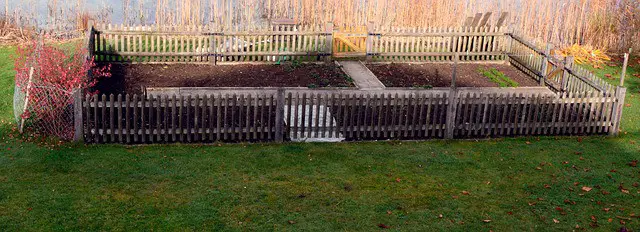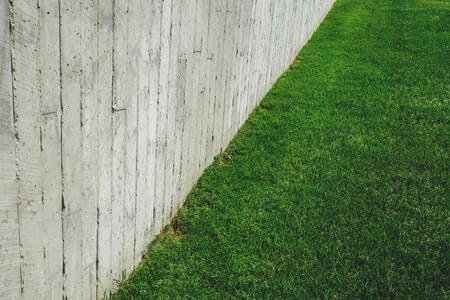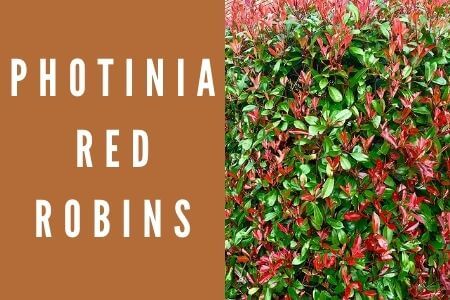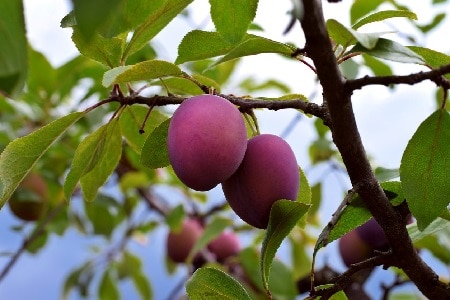What do you picture when you think of allotments? My best guess is an overwhelming amount of harvest in multiple bags. You may need to hire a truck to help you get them home. Definitely, your dream can become a reality, but not before you work your butt off to make it happen. This guide will give you the basic information you need to get the ball rolling. Let’s hop right in.
Beginner’s Guide To Starting Allotments
Secure an Allotment
For starters, you need to tick this box. Getting an allotment depends on the area you live in. Some places have sufficient space, so it’ll be easy to secure an area. In other areas, that may not be the case. You may have to get in line with hopes and prayers that you’ll secure a lot. I’m going to assume you’ve been able to get an allotment despite obvious challenges.
I’m sure you’d love to see a nice-looking plot, well taken care of, with a standard water source waiting for you. However, that may not be the case. You would most like have to deal with a rough plot overflowing with bushes.
Unfortunately, there’ll be a good amount of work cut out for you. You may require some elbow grease to clear out your plot and ensure it’s in a nice, healthy condition.
Clear the Area
The plot you’ve been allocated may have been previously used by a not-so-tidy person. Gear up with some thick boots and gloves to check for any rubbish on the floor. Dispose of pieces of metal, glass and other unwanted objects you may find.
Cut the Grasses/Plants
For allotment with overgrown bushes and plants, this is the next thing you should do. You’ll need to work with garden shredders, strimmers, and secateurs.
Ensure you are dressed in safety gear before you begin the operation. Work carefully to remove all plants and grasses taking up space on your plot. If you’re not in a hurry, you can place polythene or cardboard over the weeds to intercept their light supply. This will make your job less difficult when you get around to it.
Some wildlife may have settled in comfortably on your land. Toads, frogs, hedgehogs and other small animals may be hiding somewhere. Avoid hitting them with your tools as that will hurt them. Gently poke around the grass while making noises, so they can take the hint and escape.
You may be lucky to find some perennial plants on the plots like fruit bushes. Dig the plant out and preserve in a compost pot until you’re ready to plant again. Wouldn’t you love to get a free perennial plant?
Remove Turf
You may need to remove the turf on your site. You can do this yourself with a spade or hire someone to get it off your plate.
Pick up Stones and Weeds
While you may not particularly enjoy this task, it is very important you get it done so it doesn’t sabotage your plant’s quality later on. Ensure you do an excellent job to prevent regrets in the future.
Take the time to diligently rid your plot of stones and weed. You can seek help from your kids and friends if possible. The stones you’ve picked can be used to create a drainage system of sorts for your gardens.
Dig and Dig
For an unkempt plot with overgrown weeds, you may need to do some digging with your spade. While this is an old method of getting rid of grasses, it is pretty effective. But, be fully prepared to burn some calories during this task. You can rent a rotavator to make your job easier.
There’s an easier way to get this done if you fancy it, but it’ll require more time. If you have some time to spare, a plastic or polythene cover over the weeds will kill them within a few months or weeks. Add some organic matter on the surface without weed. Digging isn’t necessary if you make use of this method. You can go straight to planting.
Time for Some Fertilizer
Fertilizer is beneficial to the soil. Add some organic matter to your plot in the form of animal manure, soil compost or pellets. Whichever you can lay hands on will work.
Get a Water Source
Proper hydration is very essential for your plants to thrive. Your allotment may not provide a source, so you’ll need to take care of that yourself. Most persons install a water butt. This will save you the trouble of transporting gallons of water to your plot.
Mulch can also help keep the soil moisturized. Good mulch limits the growth of weed and retains moisture in the soil.
Create Pathways
Some plots are really huge and the user must find a way to make movements easy. Prior to digging, think of how you’d like to arrange your beds so you easily get to them.
Elevated beds can be easily constructed using pallets or scaffold boards. They look really nice too. You may prefer the conventional beds and that’s fine. But, ensure you create paths around them.
There’s also the option of grass paths. Once you’ve dug up the entire plot, you can throw some grass seeds or turf. Keep the edges well-trimmed and enjoy your beautiful pathway.
Planting Time!
It is important to note that preparing your plot may take a few months or an entire season, but don’t get upset. It is for the best. A great soil will give you a rich, fruitful harvest and your dream of taking the produce home in a truck will be achieved.
Once your plot is fully ready, you can proceed to do some planting or wait for the right time to do so. The season also influences the kind of crops you should plant.
Spring
Spring is a preferable time to plant some seeds on your plot. Seeds will thrive in warm and wet weather compared to cold weather. You can plant seeds earlier in pots and put them in the ground when spring comes.
You can purchase a poly-tunnel or cloche. They keep the soil warm and protect your seeds from the elements.
March: Lettuce, shallots, onions, potatoes, radish, beetroot, leeks
April: The weather is warmer at this time so you can plant more crops such as carrots, cauliflower, broccoli, peas and parsnip.
May: Include spring onions and beans

Summer
The ideal time to grow your vegetables and flowers is during the later spring and summer. Planting at a preferred season produces favourable results at the end of the day.
You’ll need to water your plants very well in the summer or else your plants may die from dehydration or won’t mature healthily.
June: This is the final month for the planting. Whatever you’ve not yet put in the soil, June is the time to get it done. You can also plant some more of crops you’ve previously sown. This is a good time to plant some marrows, squash, courgette and sweet corn. Grow them first on the windowsill or get plants from the garden centre.
July: You can grow salads
August: Spinach, lettuce, cabbages to be harvested in the winter
Autumn
You’ve probably planted most or all the things your crops by now and waiting on them to get mature for harvest
September, October and November: Hardy spring onions and lettuce, spring cabbages, onion sets and broad beans
After you’ve harvested your produce, dig the soil over and allow frost from the winter to destroy any infections. Or you can decide not to dig until the next planting season.
Winter
Wintertime is a time of harvest and preparation for the next planting season.
Keep a close watch on whatever you have left on the plot and harvest them when they’re ripe. You may be lucky to harvest some veggies just in time for the holiday celebrations.
If you decide to plant some bushes and fruit trees in the winter, you may have to wait until the temperature gets warmer before you notice any growth.
December: Perfect time to get your seeds for the next year
January: Plant some bushes and fruit trees. You can also begin growing tomatoes on the sunny windowsill or with a propagator
February: Prepare your potato seed if you plan to plant some later on. You can propagate them on your windowsill first and put the young plants in the ground later on.
Now we’re at March again, you know what to do from here.
Important Tasks to Perform on your Allotment
Watering and Weeding
Trying to control weed growth is one of the important things you’ll have to take care of during the season.
Weed seeds can easily spread around your plot. You’ll need a hoe to dig them up when the ground is dry. Doing so on wet days isn’t very effective because the weed will just grow back their roots.
As previously mentioned, mulching is quite beneficial as it helps block weed from sunlight. Mulching also helps keep the soil hydrated which is helpful if you can’t always be there to water the plants yourself.
Consider investing in a water butt. Also, you have the option of getting containers out to be filled with rain water. Whichever route you decide to take, ensure your soil is properly hydrated and the weeds are under control.
Pest Control
Unfortunately, some creatures are just as interested in your crops as you are. They may even get the first taste of your succulent crops. Caterpillars, aphids, birds and other wildlife may want to feast on your plants. You can take care of them using sprays, but organic methods exist.
Some citrus peel in water will keep aphids away. Your hands are all you need to pick up caterpillars and marigolds will deter flying insects; just plant a few around your plot.
You can net fruit bushes to keep birds away. Before you do that, ensure you go through the regulations in place concerning trapped wildlife, including birds, frogs, slow worms and hedgehogs.
Fertilizing
Fertilization of the soil is very important as we mentioned earlier. It keeps your soil healthy and ensures it bears great fruit.
Having your compost bin is a great source of natural fertilizer for your soil. Add any green or brown waste you procure during farming activities and they’ll prove themselves useful in the end.
If you do not intend to build your own compost bin[1], there’s another option to try. You can get some fish parts and some other fertilizing materials at a supermarket or garden centre. You’ll have a variety of materials to choose from.
Crop Rotation
As you may have guessed, it simply describes the change in planting location of crop.
Ensure you are fully aware of where you plant your different crops. If you planted potato in a certain area, you should grow a different crop there in the next planting season.
This method helps because different crops require a unique set of nutrients, so when you plant the same crop in the same spot year after year, it takes up all the nutrients it needs in that area and eventually, you begin to get a sad harvest.
You may need to do some research to learn the best ways to rotate your crops. Peas for instance take up a good amount of phosphorus but releases nitrogen. The next crop you plant in that area should be one that will leverage on the nitrogen.
Should you get an Allotment?
Getting an allotment should be for a purpose, of course. If you intend to grow your own fresh produce, then yes you can totally invest in an allotment. Be prepared to put in the work and do all that’s required to reap a bountiful harvest. It might be a bit stressful at first, but it’ll be worth it. Also, once you get the hang of things, it becomes easier the next season. You’ll get better at performing the tasks and even find easier and more efficient ways to get them done to save time.
If your plants do not develop like you thought they would or pests got to them first, do not be distraught. Remember you can make mistakes and like most things, it’ll get better with time if you don’t give up.
Allotment Rules and Regulations
It is essential for you to take note of the rules and regulations that guide allotments. Attend meetings as much as possible and try to find out what was discussed if you were unable to make it.
You are going to have neighbours, be careful to not to trouble them. Your neighbours can prove to be of help sometime and you can develop a good relationship with them over time.
Hopefully, you are not stuck with an untidy or all-knowing neighbour always giving unsolicited advice. If you do get stuck with any like that, deal wisely with them and focus on the success and well-being of your own crops.
Allotments are totally worth the effort. If you take the time out to create an environment conducive for your crops, be sure you’ll reap a bountiful harvest when the time comes.
Glossary
[1] Compost Bin – Link






